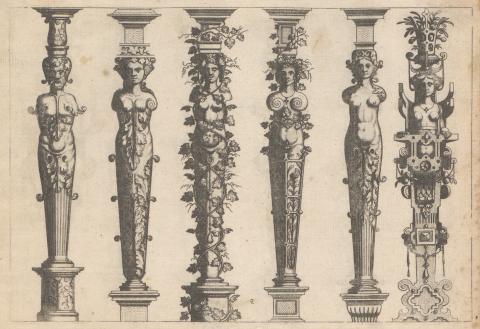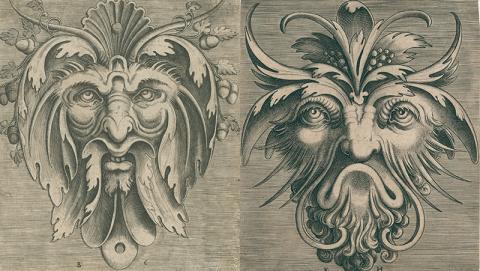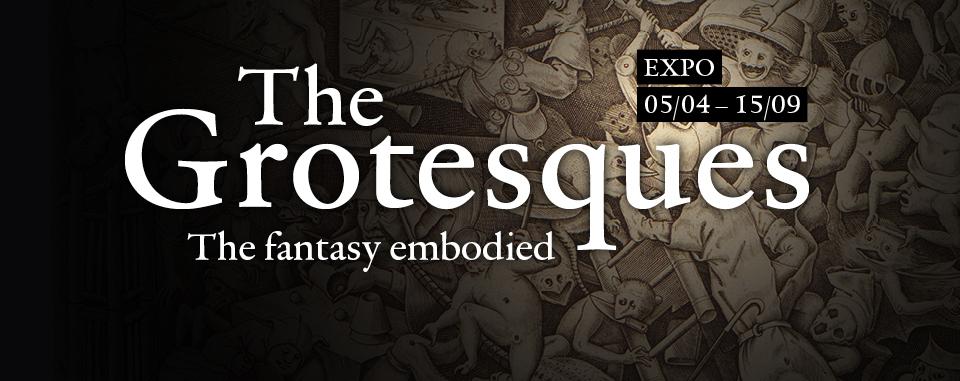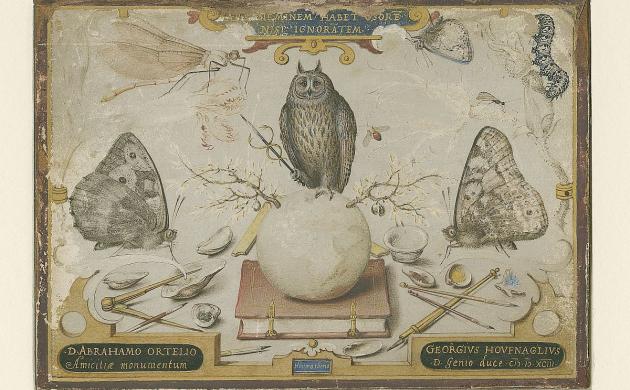The exposition
An ape with a club, a man with cloven feet, a pigeon in a little dress, ... Whoever takes the time to look at grotesque prints discovers a fascinating fantasy world. Freakish, bizarre and monstrous, but als caricatural and ridiculous.
From 5 April to 15 September we are highlighting grotesque art, from the 16th century to the present. With prints by Hans Vredeman de Vries, Cornelis Floris, Hieronymus Bosch, Pieter Bruegel, James Ensor, Fred Bervoets, Carll Cneut and many others.
From Nero ...
At the end of the 15th century in Rome, explorers discovered the ruins of one of Nero’s imperial palaces, the Domus Aurea. On the walls were colourful, symmetrical decorations, bizarre animals and imaginary creatures. The ruins were lying under so much rubble that at first the finders thought them to be decorated grottos. These wall decorations would thus go down in history as ‘grotesques’ due to the finds being discovered in ‘grotto-like’ ruins.
to the Renaissance ...

Ever since their discovery and especially during the Renaissance, these antique grotesques have inspired artists. Hans Vredeman de Vries and Frans and Cornelis Floris de Vriendt introduced this exuberant and imaginative ornamentational style to the Netherlands through their printmaking. Thanks to their printed designs with endless variations, they spread grotesque ornamentation to other art branches. Grotesques soon found their way into painting, architecture, precious metalworking, glass painting and book printing.

to Ensor

In sixteenth-century Netherlands, Bosch and Bruegel were the great pioneers with their printed drolleries. Modern and contemporary artists follow in their footsteps and works by James Ensor, Fred Bervoets and René De Coninck show that the attraction of the grotesque still lives on in art.

Practical information
- temporary expostion in the spring of 2019
- from 05.04.2019 to 15.09.2019, Tuesday to Sunday from 10 am to 5 pm
- open on Easter Monday 22.04.2019 and Pentecost Monday 10.06.2019
- closed on 01.05.2019 en 30.05.2019
- ticket prices: 8€ / 6€ / 0€ (see practical information)
- purchase your ticket online



